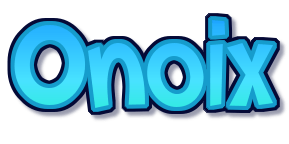Content Marketing Strategy: The editorial plan is a fundamental document for the creation of a website or blog. In fact, it guarantees the organization of content, establishing the subjects to be covered. The editorial plan is therefore not a secondary element for the development of a blog or a website, on the contrary, it establishes the logical criterion to follow, to carry out your digital project.
Editorial plan: what is it and what is it for?

An editorial plan is an essential document for identifying topics and content to cover on your website , blog , or social media. It can be created with tools such as Microsoft Excel, Microsoft Word, or even handwritten. The key element lies in content, an essential tool for developing an effective marketing strategy. It ensures regular posting of quality content to keep users engaged. The document follows a logical continuity, integrating a medium and long term content marketing strategy.
A well-structured editorial plan attracts new visits to your site or blog, targeting potential customers and enthusiasts of the topics covered. It must be designed effectively to ensure the success of your site or blog. Creating the document follows several steps, first requiring an understanding of the topics users are interested in, as well as highlighting your strengths and weaknesses and the uniqueness of your project.
A successful editorial plan takes into account that the user is essential to maintaining the vitality of your site or blog, by offering quality content that deserves their attention in the digital world.
How to organize content on a website or blog

After reaffirming the importance of a well-planned editorial plan and the strategies to implement, in order to create a good content marketing strategy , it is necessary to highlight the difference between a document designed to start a website and a document designed for a blog.
In fact, it is precisely the intrinsic characteristics of each tool that differentiate editorial needs. An editorial plan must:
- Promote activity on the web world;
- Implement an inbound marketing strategy ;
- Ensure the evaluation of published content over time.
A website has different needs than a blog. For this reason, it does not require continuous publications, therefore the content can be spaced out over time. It is possible to publish a smaller amount of content on a website than on the blog, always paying attention to the user, that is, providing extremely valuable content. It is important that an editorial plan takes into account:
- Search gaps : i.e. questions to which Google has not provided sufficient answers, i.e. niche subjects that are rarely covered on the web;
- (From l)Public interest: users must be informed of news, so it would be good to publish at least 1 article per week.
An editorial plan designed for a blog must also be based on an in-depth study of its target, namely its audience. Needs vary in particular with regard to publications, which must be much more frequent than those of a website, in order to keep users’ attention constant on the topics covered in the blog. After all, a blog should cover a certain topic in depth, dispelling any doubts or information that might worry the reader.
How to identify the right topics?

To identify the topics that interest your audience, you need to ask (question) their questions and try to provide comprehensive answers. Also in this case, the SWOT analysis , that is, the identification of your strengths and weaknesses, is essential for a good editorial plan.
The blog editorial plan should be created as a tool to identify needs and achieve goals , so that a strategy can be considered effective. Although the contents are scheduled over time, it is possible to identify new topics, perhaps more interesting or relevant, and to modify the editorial plan at any time.
A blog being a much more active tool than a website, content programming must be thought out quickly. There’s no time to lose. A blog constantly communicates with the reader, answers their questions, identifies their needs. For this reason, unlike a website, it is necessary to aim for at least 3 publications per week, using an appropriate editorial calendar, to support the document.



